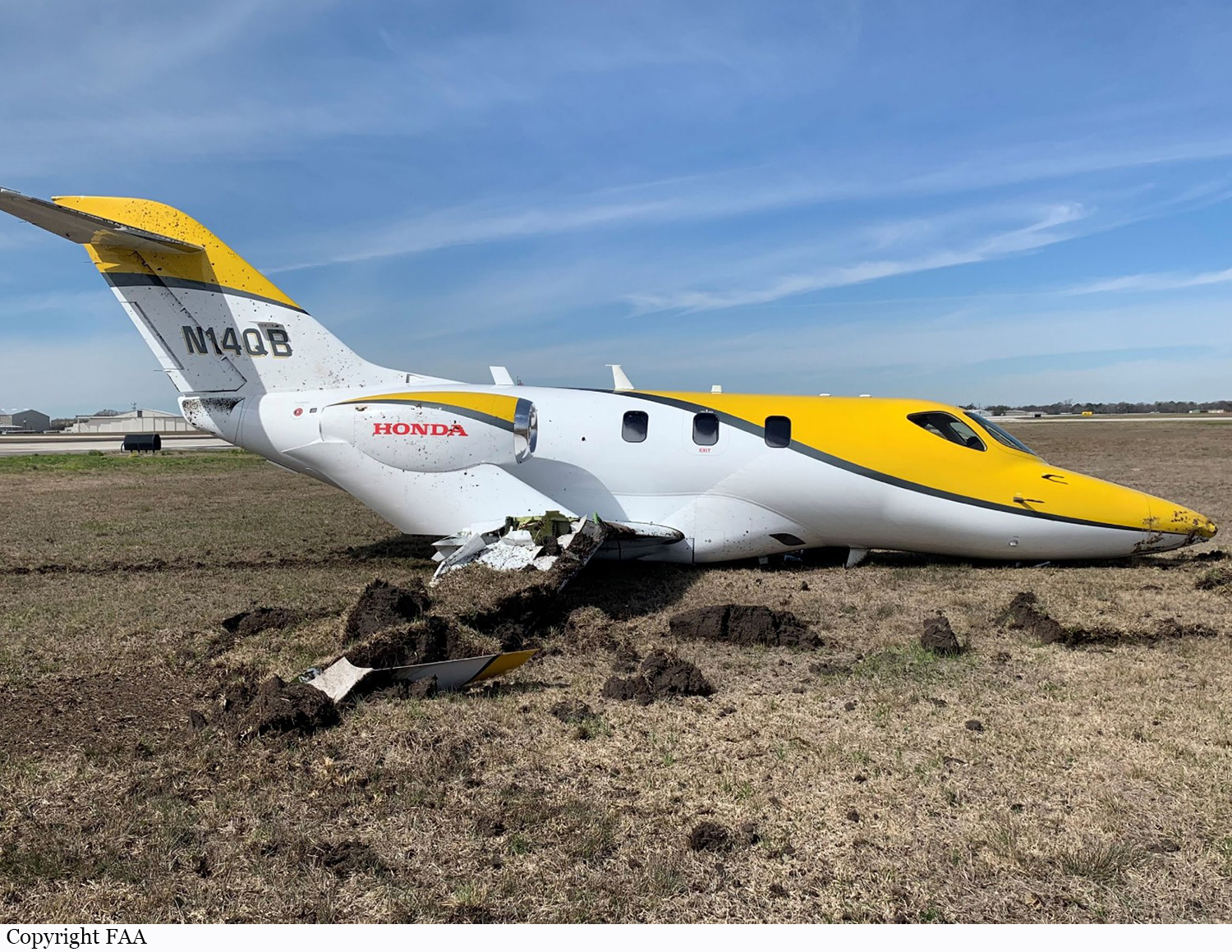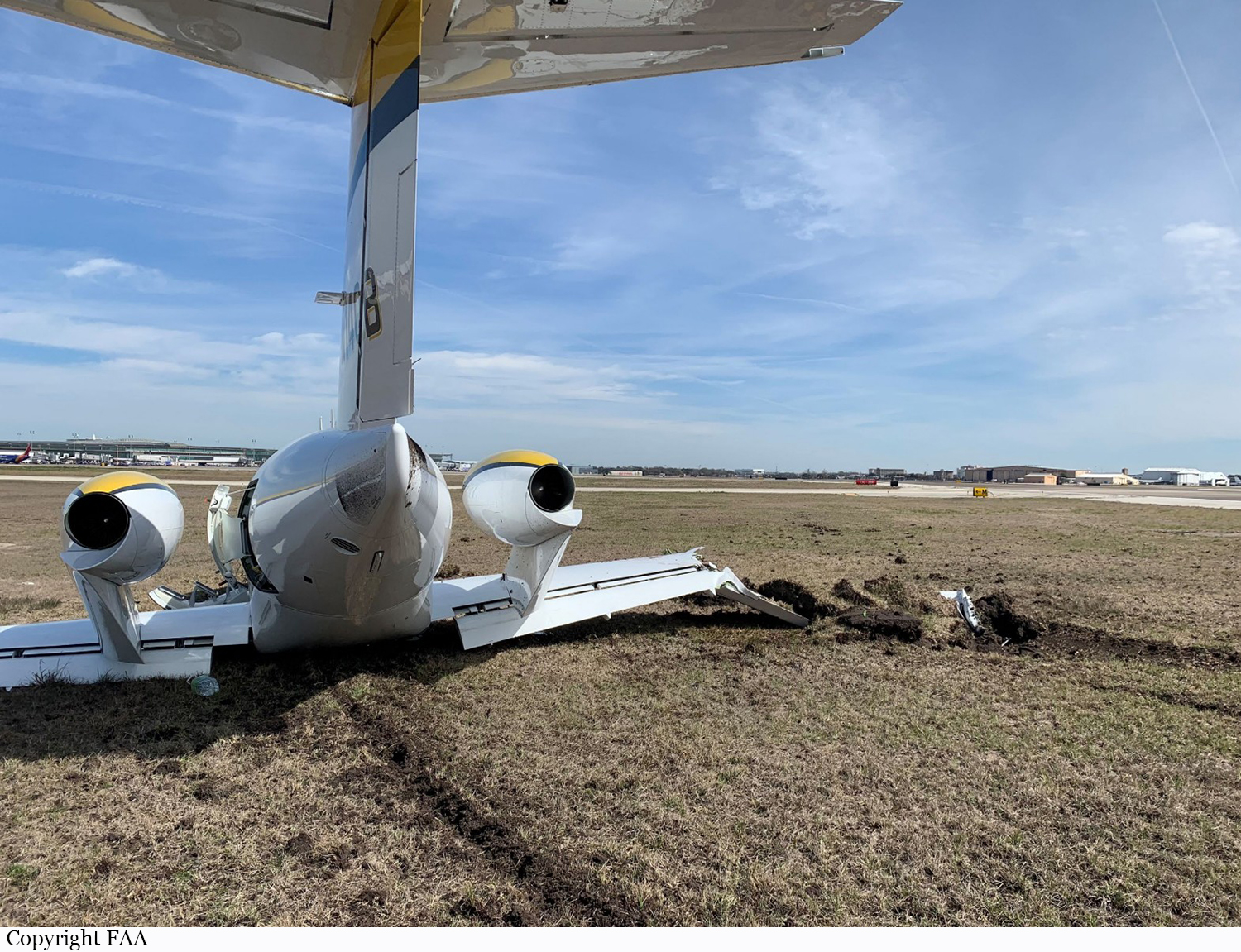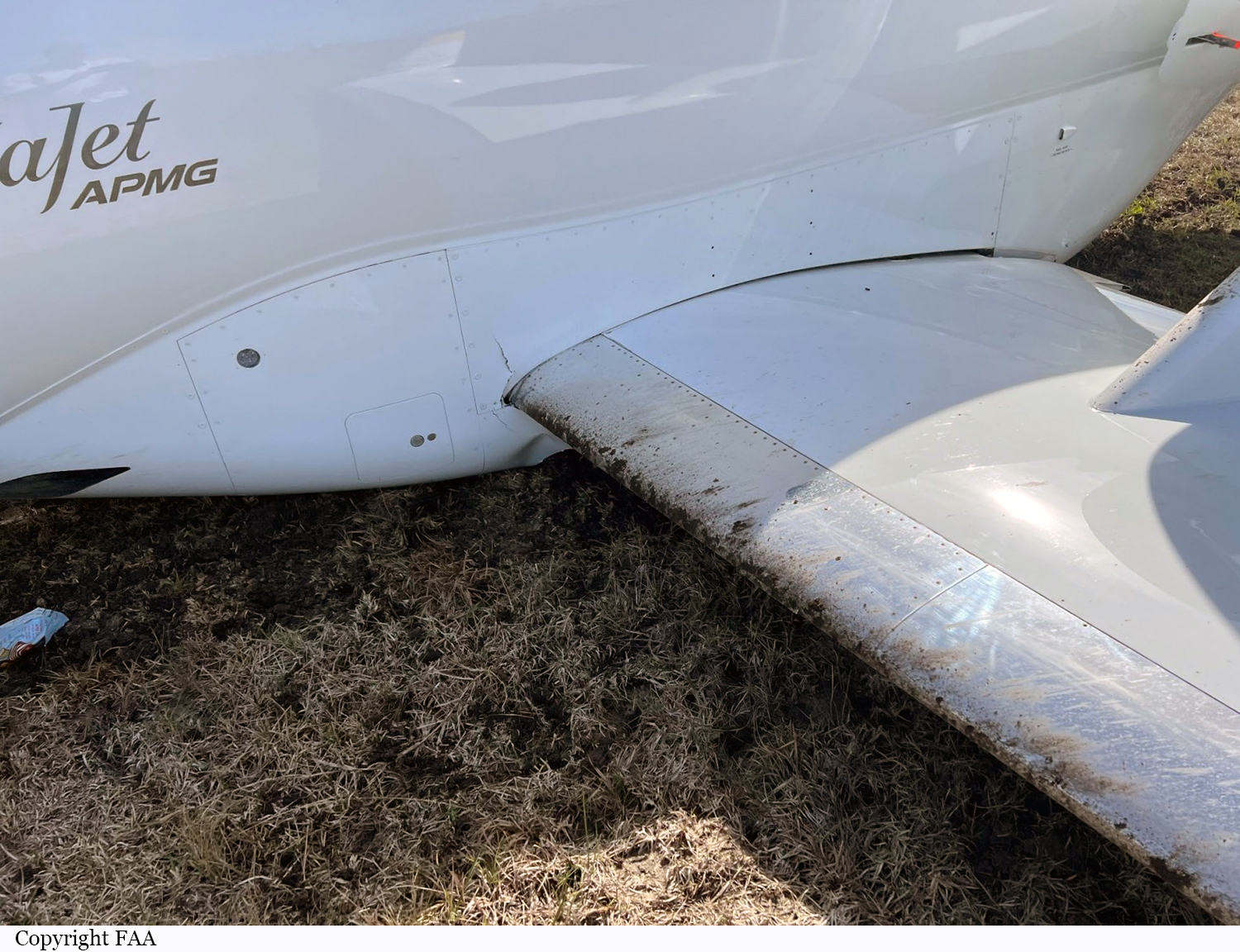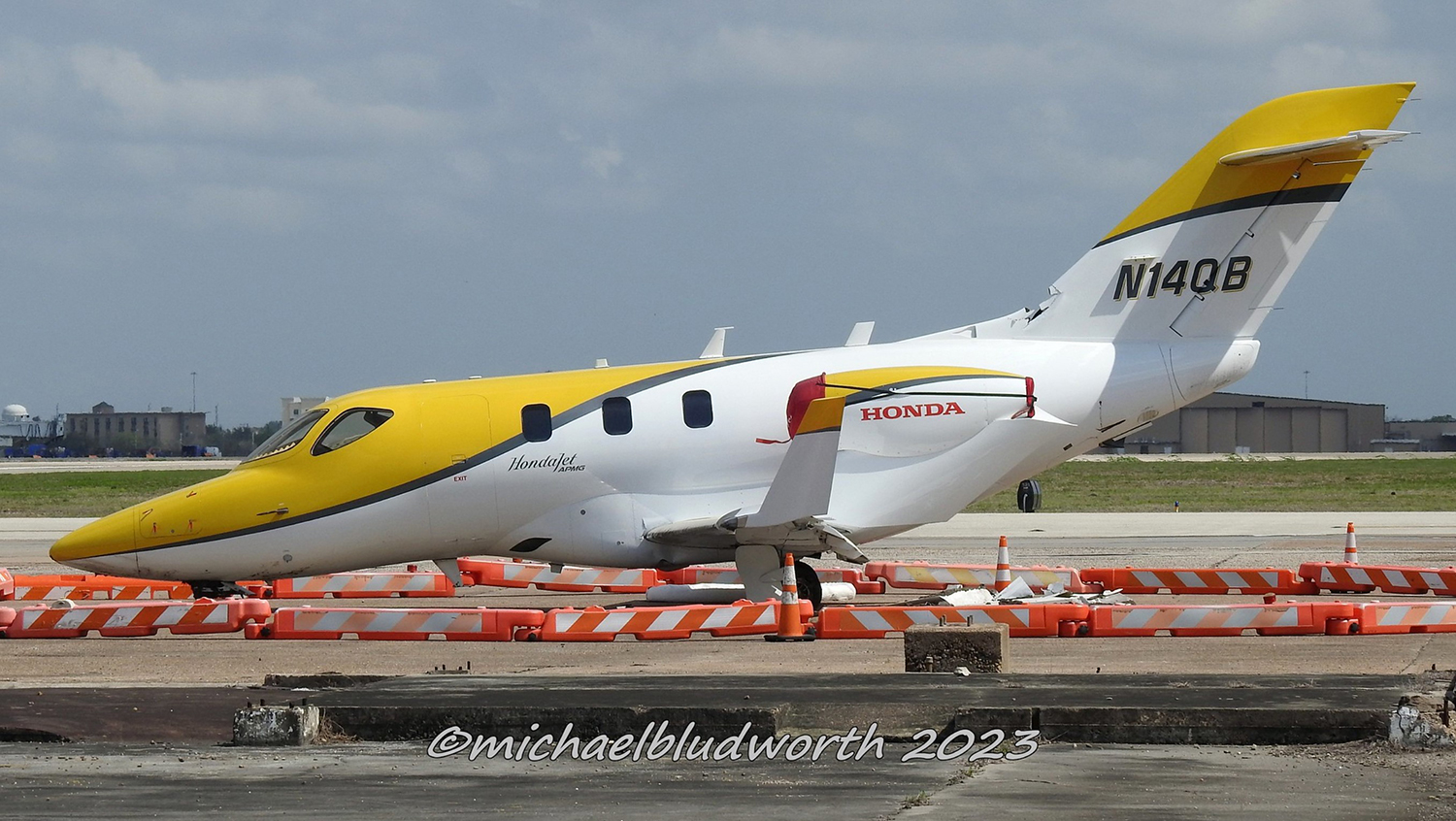Date & Time:
Feb 17, 2023 at 1116 LT
Type of aircraft:
Honda HA-420 HondaJet
Operator:
Haedo Air
Registration:
N14QB
Flight Phase:
Landing (descent or approach)
Flight Type:
Private
Survivors:
Yes
Schedule:
Miami – Houston
MSN:
420-00107
YOM:
2018
Country:
United States of America
Region:
North America
Crew on board:
1
Crew fatalities:
0
Pax on board:
5
Pax fatalities:
0
Other fatalities:
0
Total fatalities:
0
Captain / Total hours on type:
287
Aircraft flight hours:
644
Circumstances:
The pilot was landing at the destination airport with a gusting crosswind. Upon touchdown, he established the aileron controls for the crosswind and applied the brakes; however, no braking action was observed. The airplane subsequently drifted left and departed the runway pavement. It came to rest upright in the grass infield area adjacent to the runway. The outboard portion of the right wing separated which resulted in substantial damage. Data indicated that the airplane was 14 knots or more above the published landing reference speed when it crossed the runway threshold, and it touched down about 2,000 ft from the threshold. The left and right weight-on-wheels (WOW) parameters transitioned from air to ground consistent with initial touchdown; however, the left WOW parameter transitioned back to air about 2 seconds later. The right WOW parameter remained on ground until the airplane departed the runway pavement. A detailed review of the Central Maintenance Function (CMF) data files did not reveal any record of airplane system anomalies from the time the airplane lifted off until it touched down. Multiple system anomalies were recorded after the runway excursion consistent with airframe damage sustained during the accident sequence. The brake system touchdown protection is designed to prevent brake application until wheel spin-up occurs to avoid the possibility of inadvertently landing with a locked wheel due to brake application. After weight-on-wheels has been true for three seconds, power braking is enabled. It is likely that the lack of positive weight-on-wheel parameters inhibited brake application due to the touchdown protection function and resulted in the pilot not observing any braking action. The excess airspeed, extended touchdown, and transient weight-on-wheels parameters were consistent with the airplane floating during the landing flare and with the application of aileron controls for the crosswind conditions. The airplane was not equipped with wing-mounted speed brakes which would have assisted in maintaining weight-on-wheels during the initial portion of the landing. The most recent wind report, transmitted by the tower controller when the airplane was on a 3- mile final, presented a 70° crosswind at 15 knots, gusting to 25 knots. The corresponding crosswind gust component was about 24 knots. The airplane flight manual specified a crosswind limitation of 20 kts for takeoff and landing; therefore, the crosswind at the time of the accident exceeded the airframe crosswind limitation and would have made control during touchdown difficult. The pilot reported that he had made two requests with the approach controller to land on a different runway, but those requests were denied. The investigation was unable to make any determination regarding a pilot request for an alternate runway. Federal Aviation Regulations stated that the pilot in command of an aircraft is directly responsible for, and is the final authority as to, the operation of that aircraft. The regulations also stated that no person may operate a civil aircraft without complying with the operating limitations. The pilot’s ultimate acceptance of the runway assignment which likely exceeded the crosswind limitation of the airplane was contrary to the regulations and to the safe operation of the airplane.
Probable cause:
The pilot’s loss of directional control during landing which resulted in a runway excursion. Contributing to the accident was the pilot’s decision to land with a crosswind that exceeded the limitation for the airplane.
Final Report:
N14QB.pdf737.38 KB








